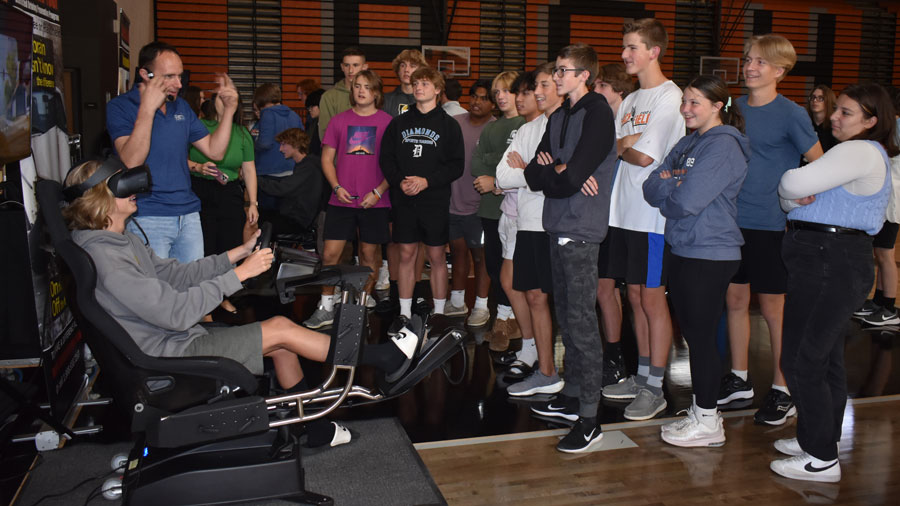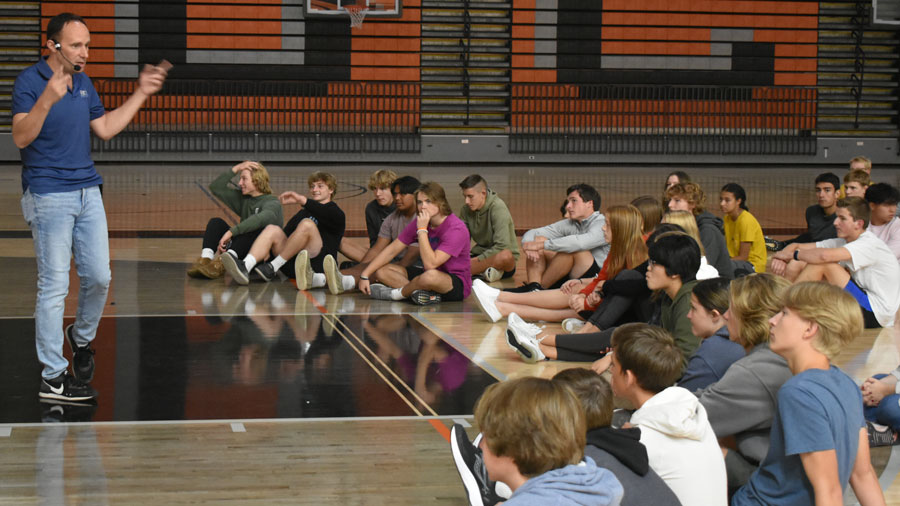Kent ISD — “That was hard,” said Grandville High senior Jordan Holliday as he exited a simulator designed to show what it’s like to be impaired while behind the wheel of a car.
It was a common reaction for many Kent Career Tech Center criminal justice students who tried out the driving simulators provided by The Save A Life Tour, which stopped there and at Byron Center High School in September.
“Initially, your vision is warped and it is drastically harder to keep control of the car,” said Jordan, a licensed driver. “It is an opportunity to get an idea of what it is really like before you get behind the wheel, because it gives you a sense of what being impaired is like.”

“I think it is very important for students to have the opportunity to experience something like this,” said Grand Rapid Police Chief Eric Winstrom, who attended the Tech Center event.
The program places emphasis on impaired driving, distracted driving, driver experience, improper driver behavior and seat belt use.
According to the Michigan Office of Highway Safety Planning, in 2020 nearly 7% of Michigan drivers were those between the ages of 15 and 20. Drivers in that age group represented just over 10% of all drivers in car crashes.
Preparing Better Drivers
“We have 1,400 kids in the building and 360-400 participating in the program today,” said Nathan Clophus, Byron Center High assistant principal. “Over half of our student body will be operating motor vehicles before the end of the year, so if we can reach 400 of them, that’s pretty good.”
Senior Adri Howland and sophomore Andre Rodriguez were the first to volunteer for the driving simulators.
“Vroom vroom, Andre,” said Program Manager CJ Rich as he secured Andre’s virtual reality headset.
The impaired driving simulation started and Andre yelled, “What’s the speed limit?”
Responded Rich: “It’s 50 miles per hour… open your eyes, man! The car’s not broken; you’re broken.”
Thirty seconds later, Andre’s virtual car drove off the road.
“It didn’t feel the same as driving a car, it felt delayed,” he said after the simulation. “This was a good real-world experience of how the delay ruins your reaction time. It changed my perspective, and (driving impaired) is much more dangerous in real life.”
Students also were encouraged to sign a poster pledging not to drive impaired.

Career Perspective
For those in the Tech Center’s criminal justice program, the simulations also helped to give the students an idea of what and why police see on patrol.
“You would notice someone driving slower than the speed limit,” Jordan said. “In order to feel like I had some control, I was holding the steering wheel to my chest, so someone whose body is hunched over is an indication they could be under the influence.”
Criminal justice instructor Ben Hawkins said there’s another goal.
“Even if they don’t go into law enforcement, we want them to be that leader who, when faced with a situation such as impaired driving, can stand up and lead the others to do the right thing,” he said.
Reporter Alexis Stark contributed to this story
















